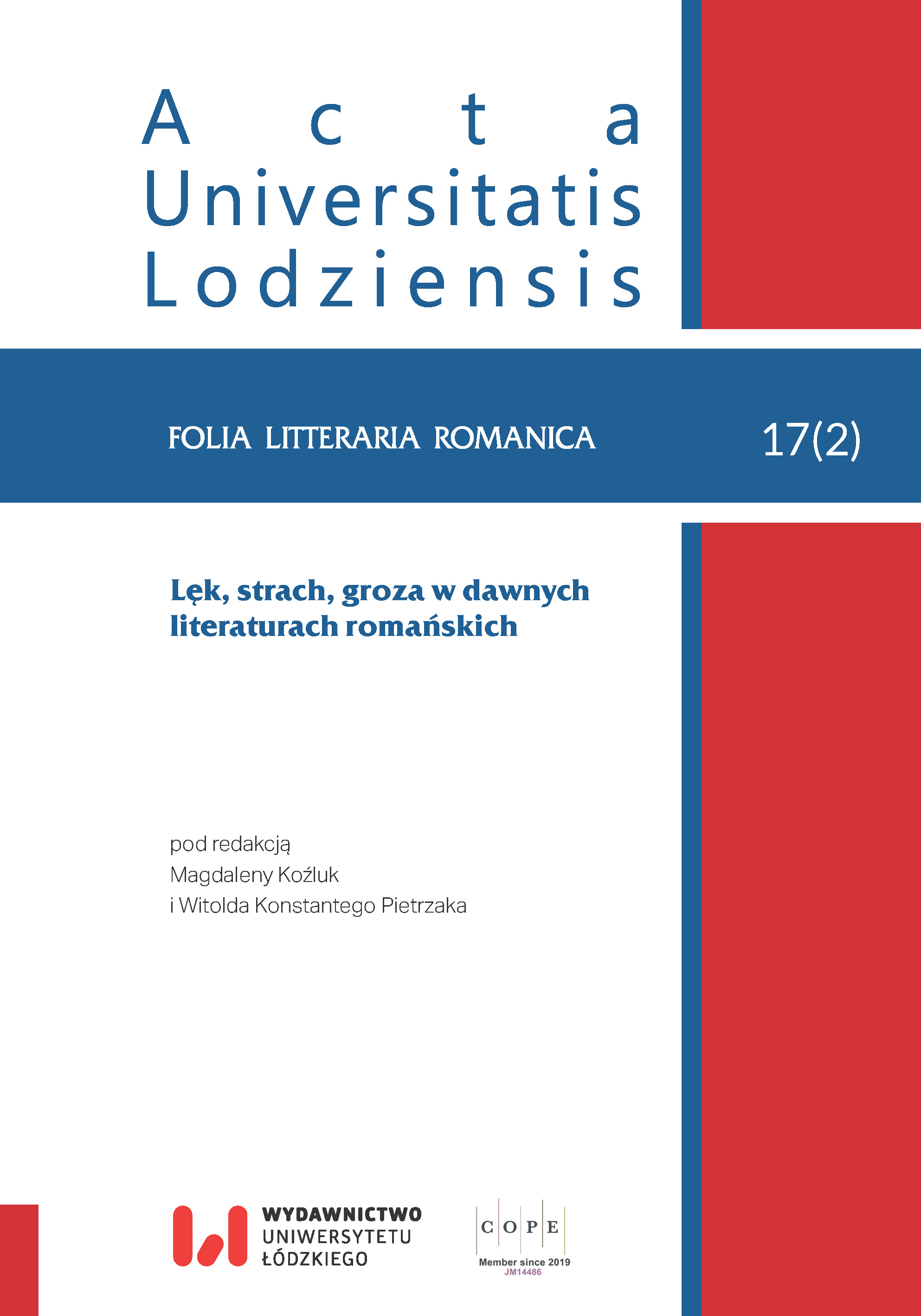Obraz wampira w traktacie Augustina Calmeta i innych tekstach francuskich przełomu XVII i XVIII wieku
DOI:
https://doi.org/10.18778/1505-9065.17.2.16Słowa kluczowe:
Augustin Calmet, vampires, Enlightenment, French literatureAbstrakt
Although they made their spectacular literary appearance with the arrival of Romanticism, vampires were arousing a vivid interest well before the 19th century. At first, the present paper will briefly review the vampire motif in French texts from the second half of the 17th and the beginning of the 18th c., such as the articles published in Mercure Galant in 1793 and 1794 or the travel narratives published by François Richard (1657), Paul Lucas (1704) and Joseph Pitton de Tournefort (1717). Afterwards, Traité sur les apparitions des esprits et sur les vampires ou les revenants de Hongrie, de Moravie, etc. [Treatise on the Apparitions of Spirits and on Vampires or Revenants of Hungary, Moravia, et al.] (1751) by Dom Augustin Calmet (1672-1757) will be analyzed in order to examine the way in which the Benedictine tackles this controversial subject in his book. The article closes with some thoughts on the reception of the treatise after its publication and its importance for the creation and consolidation of the subsequent concept of the vampire.
Pobrania
Bibliografia
Agustí Aparisi, Carme, “La aportación de Calmet a la creación de tópicos en la literatura vampírica”, Çédille, revista de estudios franceses, 2018, 14, s. 15-45, https://doi.org/10.21071/ced.v14i.10900
Google Scholar
Calmet, Augustin, Traité sur les apparitions des esprits et sur les vampires ou les revenants de Hongrie, de Moravie, etc., Paris, Debure l’aîné, 1751
Google Scholar
Cathelinot, Ildefonse, Réflexions sur le Traité des Apparitions de dom Calmet, éd. Gilles Banderier, Grenoble, Jérôme Million, 2008
Google Scholar
Cooper, Brian, “The Word ‘vampire’: Its Slavonic Form and Origin”, Journal of Slavic Linguistics, 2005, vol. 13, no 2, s. 251-270
Google Scholar
Faivre, Antoine, « Du vampire villageois aux discours des clercs », Les Vampires, éd. Jean Marigny, Paris, Albin Michel, 1993, s. 45-74
Google Scholar
Feijóo, Benito Jerónimo, Cartas eruditas y curiosas, Madrid, Pedro Marin, 1774, t. IV
Google Scholar
Gilles, Banderier, « (Ir)rationalité des vampires ? À propos du Traité sur les apparitions... de dom Augustin Calmet », Acta Iassyensia Comparationis, 2008, 6, s. 33-52
Google Scholar
Groom, Nick, The Vampire. A New History, New Haven and London, Yale University Press, 2020
Google Scholar
Jaucourt, Louis de, Encyclopédie, ou Dictionnaire raisonné des sciences, des arts et des métiers, Neufchastel, 1765, t. 16
Google Scholar
Kozak, Łukasz, Upiór. Historia naturalna, Evviva L’arte, Warszawa 2021
Google Scholar
Le Glaneur historique, moral, littéraire, galant et calottin, no IX, jeudi, 23 avril 1733
Google Scholar
Lucas, Paul, Voyage du Sieur Paul Lucas au Levant, Paris, Guillaume Vandive, 1704, vol. II
Google Scholar
Mallet, Damien, “Pierre Des Noyers, a Scholar and a Courtier”, Kwartalnik Historii Nauki i Techniki, 2019, t. 64, nr 1, s. 139-146, https://doi.org/10.4467/0023589XKHNT.19.008.10116
Google Scholar
Marigner, « Sur les stryges de Russie », Mercure Galant, février 1694, s. 13-119
Google Scholar
Marigny, Jean, Sang pour sang. Le réveil des vampires, Paris, Gallimard, 2010
Google Scholar
Mémoires pour l’histoire des sciences et des beaux arts, août 1746
Google Scholar
Morris, Kathryn, “Superstition, Testimony, and the Eighteenth-Century Vampire Debates”, Preternature: Critical and Historical Studies on the Preternatural, 2015, vol. 4, no 2, s. 181-202, https://doi.org/10.5325/preternature.4.2.0181
Google Scholar
Noyers, Pierre des, [« Article fort extraordinaire »,] Mercure Galant, mai 1693, s. 62-69
Google Scholar
Petoia, Erberto, Wampiry i wilkołaki. Źródła, historia, legendy od antyku do współczesności, Universitas, Kraków 2012
Google Scholar
Richard, François, Relation de ce qui s’est passé de plus remarquable à Sant-Erini, Paris, Sébastien et Gabriel Cramoisy, 1657
Google Scholar
Rousseau, Jean-Jacques, « Lettre à Christophe de Beaumont », in Œuvres complètes de J. J. Rousseau, Paris, Furne, 1846, vol. II
Google Scholar
Tournefort, Joseph Pitton de, Relation d’un voyage du Levant, Paris, Imprimerie Royale, 1717, vol. I
Google Scholar
Vidal, Fernando, “Extraordinary Bodies and the Physicotheological Imagination”, The Faces of Nature in Enlightenment Europe, ed. Lorraine Daston, Gianna Pomata, Berlin, Berliner Wissenschafts Verlag, 2003, s. 61-96
Google Scholar
Voltaire, Dictionnaire philosophique, vol. VI, in Œuvres complètes, Paris, Renouard, 1819, vol. XXXVIII
Google Scholar
Wilson, Katharina M., “The History of the Word ‘Vampire’”, Journal of the History of Ideas, Oct.-Dec., 1985, vol. 46, no 4, s. 577-583, https://doi.org/10.2307/2709546
Google Scholar
Opublikowane
Wersje
- 2023-08-10 - (2)
- 2022-12-30 - (1)
Jak cytować
Numer
Dział
Licencja

Utwór dostępny jest na licencji Creative Commons Uznanie autorstwa – Użycie niekomercyjne – Bez utworów zależnych 4.0 Międzynarodowe.













